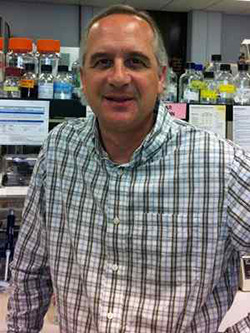Inspiration could strike anywhere. For Mark Schneegurt, it comes from time in nature,
daydreaming.

“I need time where I can just sit and think,” Schneegurt, professor of microbiology, said. “I can stare at the bark on a tree and just start scribbling ideas down. To anyone else, it looks like a mess; but, to me, it’s two or three years of ideas waiting to be sewn together.”
Schneegurt’s curiosity regarding the natural world compelled him to study extreme salty environments, starting with the Great Salt Plains of Oklahoma before moving to Hot Lake and Basque Lake in the Pacific Northwest. NASA came across his research, seeing a possibility of application to the study of life on Mars and contacted him. Since his initial collaboration in 2009, the microbiologist has received more than $500,000 in grant funding from the agency.
“It was an unexpected praxis,” Schneegurt said. “We call it serendipity, but that’s just science. At least, it’s my kind of science.”
Science, Schneegurt testifies, requires not only adaptability, but collaboration. Lots of collaboration.
“Advances are made at the interfaces between disciplines and perspectives,” he said. “If I only talked to people that know what I know, we wouldn't get very far.”
Four faculty members at Wichita State University, Schneegurt included, as well as a team of faculty members at Iowa State University received a joint grant from the National Science Foundation, totaling $4 million over four years. The combined teams will conduct a life cycle analysis for urea, an ecological alternative to ammonia for field fertilization.
“The pollution that we create through our industrial and agricultural practices has ramifications for everyone going forward,” he said. “This project will give us a way to reduce nutrient pollution and reduce our greenhouse gas footprint while maintaining a high level of agricultural productivity.”

